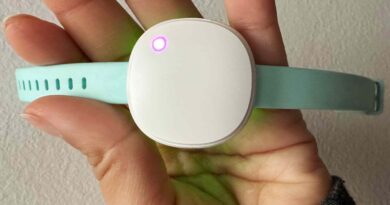Myopic Macular Degeneration (MMD), or Pathological Myopia

Myopic macular degeneration (MMD), or pathological myopia, occurs when high myopia (severe nearsightedness) stretches the retina, causing symptoms like blurry vision and blind spots.
MMD affects up to 3% of people and is a leading cause of vision impairment worldwide.
Eye doctors, such as optometrists and ophthalmologists, can diagnose MMD during an eye exam. No cure exists, but treatments can help slow MMD progression and preserve vision.
MMD happens over time, with symptoms worsening as the retina (the tissue in the back of the eye) becomes thinner and more damaged. Many people with MMD first notice subtle vision changes, such as blurry vision.
As MMD progresses, damage to the macula (the retina’s center) can lead to more noticeable vision problems, such as:
- Scotomas (blind spots): Vision loss in the center of your vision, making it hard to read or recognize faces
- Metamorphosis (distorted vision): When straight lines appear wavy or distorted, like a straight doorframe appearing bent or curvy
- Floaters and flashes: Small dark specks or cobweb-like shapes that drift across your vision, or seeing sudden flashes of light
- Reduced contrast sensitivity: Difficulty seeing fine details and subtle differences in shading and patterns
People with myopia have elongated eyes. Longer eyeballs cause distant objects to look blurry while vision up close stays clear. The longer your eye is, the more severe your myopia will be.
MMD happens over time as your eye stretches and further elongates. As your retina becomes thinner, it is more likely to experience damage and scarring. Abnormal blood vessels can grow and leak, or bleed, into the retina. These factors can all contribute to MMD symptoms, such as blind spots, distorted vision, or vision loss.
Risk Factors
People with high (severe) myopia have the highest risk of MMD, though not everyone with high myopia will develop the condition. Several factors can increase your risk, including:
- Corrective lens prescription: The strength of your eyeglass prescription determines how much correction you need for clear vision. People with high myopia, who typically need stronger prescriptions for nearsightedness, have a higher risk of developing MMD.
- Genetics: A family history of high myopia or MMD increases your likelihood of developing the condition.
- Age: MMD can affect people of all ages, though your risk increases with age.
- Ethnicity: MMD is most common in people of East Asian descent.
- Environmental factors: Limited time spent outdoors during childhood and excessive near work (such as prolonged screen time or reading) are associated with high myopia and a higher risk of MMD.
Eye doctors, such as ophthalmologists, can diagnose MMD through an eye exam. Vision and imaging tests can determine how myopia affects your vision and allow your provider to check your retina’s appearance, function, and health.
To diagnose MMD, your eye doctor will review your medical history and may perform the following tests:
- Visual acuity test: These tests check how clear your vision is in each eye by having you read letters on a chart at different distances.
- Dilated eye exam: This involves placing drops in your eyes to dilate (widen) your pupil, which allows your eye doctor to get a clear view of your retina and look for signs of MMD-related damage, such as scarring.
- Optical coherence tomography (OCT): This noninvasive imaging test uses light waves to create detailed retina images, helping detect retinal thinning, scarring, or fluid buildup.
- Fluorescein angiography: During this test, your doctor will inject a dye into the bloodstream via a vein in your arm. They will then take images of your eyes to check for abnormal or leaking blood vessels in the retina.
There’s no cure for MMD; treatment focuses on preserving vision and slowing the progression of vision loss.
Anti-VEGF Injections
Anti-vascular endothelial growth factor (anti-VEGF) medications are the most common treatment options for MMD. VEGF is a protein that causes abnormal, leaky blood vessels to grow in the retina, leading to swelling, bleeding, and vision loss. Anti-VEGF drugs block this protein, reducing fluid buildup and preventing further damage to your macula.
During treatment, your eye doctor will numb your eye with anesthetic drops to minimize discomfort before injecting the anti-VEGF medication into the vitreous cavity—the gel-filled space in the back of the eye.
Commonly used anti-VEGF drugs include:
- Lucentis (ranibizumab)
- Eylea (aflibercept)
- Avastin (bevacizumab)
Laser Therapy
Laser therapy involves using a laser to find and close abnormal blood vessels in your eye.
Before the procedure, your eye doctor will use eye drops to dilate your pupil and numb your eyes to reduce discomfort. During treatment, you may see light flashes as the laser beams enter your eye to destroy or close off leaking blood vessels.
Laser therapy is a less common treatment, but it may be an option when other treatments aren’t effective or possible. While some people initially experience vision improvement, evidence suggests the benefits often disappear within five years, with new abnormal blood vessels frequently forming near treated areas.
Photodynamic Therapy (PDT)
Photodynamic therapy (PDT) is a treatment option for MMD when abnormal blood vessels leak and cause fluid buildup around your retina. Your eye doctor may try this treatment alongside anti-VEGF injections.
PDT involves injecting verteporfin (a light-sensitive drug) into your bloodstream so it travels to the abnormal blood vessels in the retina. Your eye doctor will use a specialized laser to activate the drug, which breaks down these vessels and reduces leakage that causes vision loss.
Your eye doctor will give you verteporfin through an intravenous (IV) injection, numb your eye with eye drops, and use a special contact lens to help guide the laser and apply it to the targeted blood vessels. Some people may need multiple PDT sessions to slow vision loss.
Healthy lifestyle habits and practices may help lower your risk of MMD or slow its progression.
These include:
- Regular eye exams: Regular eye exams can help detect changes to your vision and eye health early, allowing for prompt diagnosis and treatment.
- Myopia lenses: These specialized contact lenses or eyeglasses are designed to slow myopia progression and may help lower your risk of developing MMD later in life. The lenses change how light focuses on your retina, which can help control eye elongation.
- Atropine drops: These drops dilate your pupils and temporarily relax the muscles your eyes use to focus, which may slow myopia progression and help prevent MMD.
- Outdoor activity: Spending more time outdoors, particularly in childhood, may lower the likelihood of developing high myopia and MMD.
- Take breaks from screens and near work: Follow the 20-20-20 rule—every 20 minutes, look at something at least 20 feet away for 20 seconds. Avoid spending too much time on activities that affect your nearsightedness, like reading or screen use, to help reduce eye strain and potentially lower your risk of developing MMD.
MMD can increase your likelihood of developing other eye conditions, particularly those associated with high myopia.
These include:
- Retinal detachment: When the retina pulls away from its normal position, it can cause symptoms like floaters, light flashes in one or both eyes, and a dark curtain in your field of vision.
- Glaucoma: This condition damages the optic nerve and can lead to blindness.
- Cataracts: This condition causes cloudiness in your eye’s natural lens and can lead to vision loss.
Although myopic macular degeneration can cause vision loss, many people with the condition can maintain their eyesight with treatment. Low vision aids, like magnifiers, large-print materials, and voice-to-text technology, can improve daily functioning. Adjusting lighting at home and work can make everyday tasks easier.
Following your treatment plan can help preserve your vision. Your eye doctor can help you develop personalized strategies for adapting to changes in sight.





